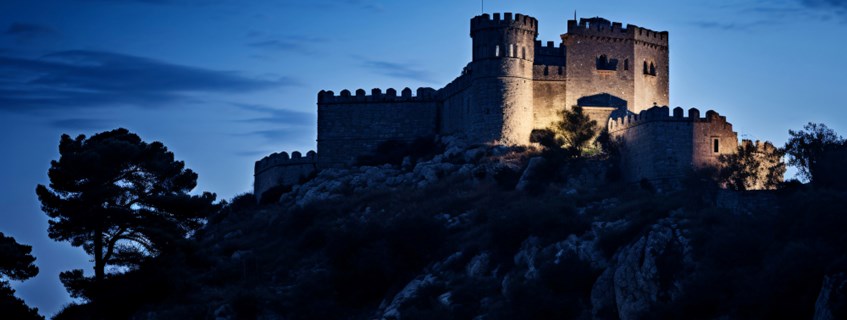
The Most Famous Spanish Castles
Castles in Spain began to appear in different historical periods, depending on the region and circumstances. However, the most significant construction of castles in Spain took place between the 11th and 16th centuries.
- Moorish castles: The Moors, who conquered parts of Spain in the 8th century, began building castles as military fortifications and residences. An example of a Moorish castle is the Alhambra in Granada.
- Castles of the Reconquista era: From the 11th century, with the beginning of the Reconquista (the restoration of Christian power in Spain), Christian monarchs and knights also began to build castles as defensive structures against Moorish influence. This is the period of active construction of castles in Castilla, Aragon, and other regions.
- Renaissance and Baroque Era: In the 16th century, after the completion of the Reconquista, castles began to perform more residential functions, and their architecture became more luxurious and refined. An example of such castles is the Alcázar in Seville.
- Castles during the Empire: During the period of the Spanish Empire (16th-17th centuries), the construction of castles continued, including fortresses on the coast and in colonial territories.
Thus, castles in Spain have a long and varied history, starting with Moorish buildings and continuing through the Renaissance, Baroque and beyond. They reflect the historical events, cultural influences, and architectural trends of their time.
The Most Famous Castles
If you want to plunge into the atmosphere of the Middle Ages, then we recommend looking in the direction of the following cultural sites
Alhambra in Granada: This is one of the most famous Moorish castles in the world, combining Arabic architecture, gardens and fountains.

Alcázar in Seville: This castle combines Arabic, Gothic and Renaissance architecture and served as the residence of the Spanish kings.
Alcázar of Segovia: Known for its unique appearance resembling a ship. This castle is located on top of a hill and is a fine example of Spanish architecture.

Alcázar of Toledo: Perched on a high hill, it is a fortress that mixes Moorish and European architectural styles.
Cardona: Located in Catalonia, this castle is known for its gloomy atmosphere and feudal architecture.
Montserrat: Although not a typical castle but a monastery, it deserves a mention due to its magnificent location on the cliffs and its cultural significance.
This is just a small list of castles in Spain, and each of them represents a unique history and architectural beauty.

